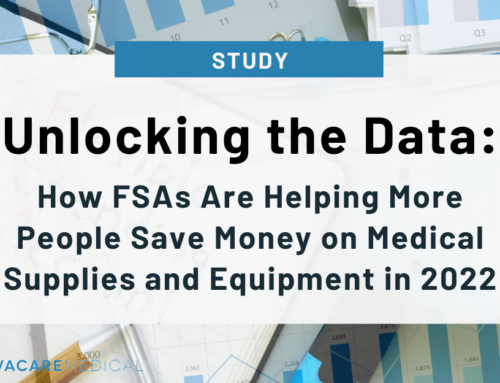Wrapping a compression bandage around an ankle to relieve pain caused by tendonitis, heel discomfort, arthritis, gout, Achilles, sprains, and other ailments is a popular treatment. An ankle sprain is, unfortunately, a very common injury. They happen when the foot or ankle flexes at an unusual angle, causing the outer ligaments to rip. Sprains do not heal fast if left untreated, and they can cause chronic discomfort and permanent paralysis in the foot or ankle. It’s critical to learn how to wrap an ankle properly for a speedy recovery.
A compression wrap around an ankle does not completely inhibit mobility. A compression wrap does, however, limit mobility, which can help speed up the healing process because too much movement can cause the ligaments to rip, even more exacerbating the injury. Ankle wraps may not always provide complete support. Even if you learn to wrap your ankle, it must still support the complete body’s weight.
Wrapping an ankle, however, provides some support to the joint and can help avoid severe swelling, especially when combined with a cold pack. Most importantly, wrapping an ankle keeps you aware of your injury, causing you to be more cautious and avoid jerky movements.
Why should you wear a compression wrap?
A compression bandage can assist reduce swelling, which can relieve pain in the foot and ankle. It is not a brace and does not provide major support or limit movement of the ankle; however, it does serve as a helpful reminder to the wearer to proceed with caution so as not to injure themselves further.
If you’re recovering after surgery and want to wander around your house, it is advisable to wear compression garments like socks or ankle braces for full support. With the help of some mobility aids like crutches and canes, you can wander off your house without hesitation because you know that these helpful products will aid you.
What is a sprained ankle?
A sprained ankle is when the ankle’s ligaments are injured. Ligaments are dense rounds of fibrous tissue that link two bones at the joint, keeping them in place and stable. These ligaments can tear if stretched above their breaking point, resulting in pain and dysfunction. Taking a painkiller can help you ease the pain for a while, but going to a doctor is the most advisable.
A lateral ligament sprain is a type of ankle sprain that affects the outside of the ankle. Sprains can range from minor ligament fiber rips to severe tissue ruptures. Sprains are categorized as mild, moderate, or painful by doctors depending on ligament damage.
Grade 1 sprain: The ligament fibers are only slightly stretched and microscopically torn in this moderate sprain. Slight soreness and swelling are possible symptoms of this type of injury.
Grade 2 sprain: Grade 2 is a moderate injury involving a partial ligament tear. Tenderness and swelling are likely to be modest. A doctor can notice that the joint is unusually lax.
Grade 3 sprain: A severe sprain can result in a total ligament tear and substantial discomfort and swelling. In this stage, a normal pain reliever can’t do anything. During an examination, a doctor might notice significant ankle instability. Damage to the ankle joint’s bones and cartilage might develop if the ankle stays unstable.
How to apply a compression wrap on an ankle
Wrapping a sprained ankle reduces swelling and allows the ligaments in the ankle to heal in their natural configuration. When a person’s ankle swells, the ligaments can stretch out and repair, reducing their functioning. It is important to remember that wrapping one’s ankle or wearing too tight compression garments can restrict blood flow to the area.
Reduced circulation can impede healing and cause tissue injury in the ankle and foot. However, very loose bandaging of the ankle is ineffective. The strategies below will guide you on how to wrap an injured ankle properly:
- Place the pad under the ankle bone (open end up) to help keep fluid out of the hollow area beneath it to make a half-inch pad thickness (1.3 cm).
- If the compression bandage isn’t already rolled up, do it now. Maintain a 90-degree angle with your ankle. Begin where your toes meet your foot’s body. Hold the bandage’s loose end against your foot’s side. Wrap the bandage once around the ball of your foot, pulling it taut with a light tug.
- After the first wrap, slowly wrap around the foot’s arch. Pull the bandage around the top of the foot and the ankle, diagonally from the bottom of the toes. In an infinity loop pattern, bring the compression bandage diagonally through the top of the foot and beneath the arch.
- Wrap the bandage around the felt piece as you get closer to the ankle bone, so it stays in place. Continue in an infinity figure around the ankle and foot, traveling from the bottom to the top, toward the heel and calf. Wrap the foot completely and finish several inches above the ankle. Most compression wraps have clip fasteners or are self-fastening. If you don’t have any, use medical tape to attach the end.
- The wrap should be just right, not too tight that it restricts circulation in the foot, and not too loose that it doesn’t have relevance to the ankle. Make sure your toes aren’t pointing in the wrong direction. The wrap is excessively tight and should be removed if they become purplish or blue, chilly to the touch, tingly, or numb. Additionally, before bedtime, loosen the wrap. Make sure to use casting supplies for fast recovery.
Final Thoughts
It is usually a band-aid approach and not a recommended treatment for the problem. If the discomfort or distress continues, you should schedule an appointment with experts to assess your condition and provide a treatment plan to get you back on track.
AvaCare Medical‘s objective is to ensure that you are in the greatest possible health. If that is not the case, please contact us here at 1-877-813-7799 right away or email us here at info@avacaremedical.com to figure out how we can best assist you!



